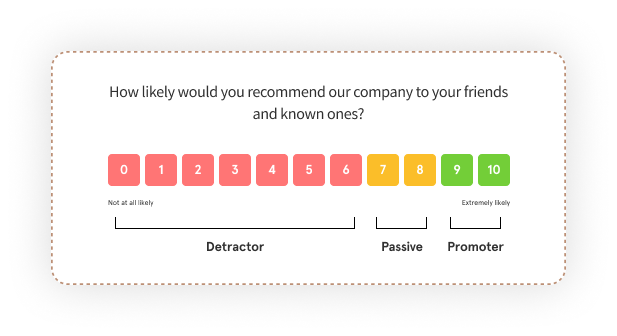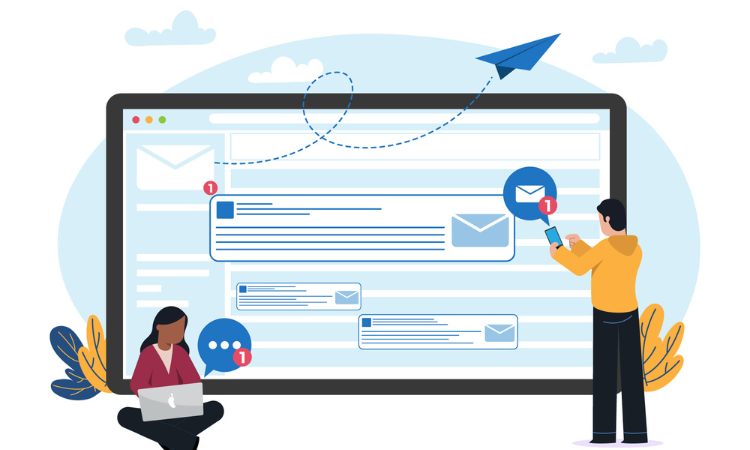Did you know that companies with the highest Net Promoter Scores (NPS) in their industries grow revenue 2.5 times faster than their competitors? It’s not a coincidence—it’s a testament to the power of loyalty-driven growth. Yet, despite NPS being a widely adopted metric, most companies fail to fully leverage its potential to drive measurable revenue outcomes.
Here’s the reality: 60% of companies struggle to link customer feedback data to measurable business outcomes like revenue or customer retention. They measure NPS, but they struggle to act on the data, tie it to their bottom line, and convert insights into tangible business results. This disconnect can mean millions in missed opportunities.
To give you an idea, imagine a SaaS company with 100,000 customers, each generating an average annual revenue of $1,000. If their churn rate is 10%, that equates to a loss of 10,000 customers, or $10 million in annual revenue. By leveraging NPS data to reduce churn by just 2%, they could retain an additional 2,000 customers, preserving $2 million in revenue.
Now, scale this across industries and organizations, and the financial stakes are clear: unlocking the true potential of NPS is not just a CX initiative—it’s a growth strategy.
In this blog, we will explore how you can harness NPS to drive measurable ROI, strategies to reduce churn and drive growth, and create powerful advocates for your brand. Let's get started!
TL;DR
- A higher NPS leads to increased revenue growth by increasing CLV, more referrals, reduced churn, and the ability to command premium pricing.
- By performing segment based analysis, leveraging promoters, resolving detractor concerns, driving product innovation through NPS feedback, you can increase customer loyalty.
- Companies like PayPal, Vodafone, American Express, Zappos, and Adobe have successfully leveraged NPS to drive substantial organic growth rates.
- By leveraging AI and using NPS automation, you can quickly analyze customer feedback, identify trends, and implement timely actions to improve satisfaction and drive revenue growth.
- Zonka Feedback is an NPS survey tool that offers advanced segmentation, AI-driven sentiment analysis, NPS automation, advanced reporting, and effective closing of the feedback loop to support enterprises in improving NPS and driving financial growth. Schedule a demo to explore its NPS features and drive business growth!
Measure Customer Loyalty with NPS ❤️
Collect NPS feedback, uncover AI-powered insights and measure its impact on your business revenue with Zonka Feedback.

What is Net Promoter Score (NPS)?
Why does some companies consistently outperform their competitors? It's not just about a stellar product or aggressive marketing. It's about understanding and nurturing your customers. That is where Net Promoter Score comes into play.
NPS is a simple yet powerful metric that measures customer loyalty and satisfaction by asking customers a single question:
On a scale of 0 to 10, how likely are you to recommend our company/product to a friend or colleague?
Over two-thirds of Fortune 100 companies continuously leverage NPS to drive profitable growth. The magic lies in how we categorize responses to the NPS survey question:
- Promoters (9-10): These are your raving fans, the ones who can't stop talking about your brand. They're your biggest advocates and drivers of growth.
- Passives (7-8): These are satisfied but not enthusiastic. While they're not likely to badmouth you, they're also not actively promoting your business.
- Detractors (0-6): These are the unhappy customers who can damage your reputation. They're more likely to churn and spread negative word-of-mouth.

By calculating the difference between the percentage of promoters and detractors, NPS gives you a score that reflects your customer loyalty health. But the true value of NPS lies beyond the score—it’s in how you use it to improve NPS sales, retention, and overall NPS revenue growth.
Why NPS is Important for your Business Success?
Companies like Apple, Netflix, and Amazon don’t just rely on exceptional products—they also rely on exceptional loyalty. These industry leaders consistently use NPS in business to build strong customer relationships, turning satisfaction into measurable revenue growth.
Why? Because the NPS impact on revenue is real:
- Higher Retention: Promoters are more likely to stick around, reducing churn and its associated costs.
- Increased Revenue: Loyal customers spend more over time, driving upsell and cross-sell opportunities.
- Stronger Advocacy: Happy customers generate referrals, reducing your cost per acquisition while fueling organic NPS growth.
For instance, Bain & Company research shows that improving NPS by just 10 points can lead to a 20% increase in sales. The math is simple, but the strategy requires deeper insights—which brings us to the next evolution of NPS.
NPS 3.0: Redefining Loyalty in Business Growth
When Fred Reichheld introduced the Net Promoter Score (NPS) in 2003, it revolutionized how businesses measured loyalty. The concept was refreshingly simple but it had its limitation. The metric measured loyalty, but didn’t explicitly connect it to financial outcomes like revenue, retention, or customer lifetime value. Companies struggled to translate these insights into actionable strategies that directly impacted their bottom line.
That’s when Fred Reichheld and his team introduced NPS 3.0, the next evolution of the framework designed to bridge this gap.
NPS 3.0 introduces two transformative concepts:
- Earned Growth Rate (EGR): Unlike basic NPS calculations, EGR focuses on the revenue generated from loyal customers and referrals. It’s about quantifying how much of your growth comes from the goodwill of your customers rather than paid acquisition. For example, if 70% of your growth is driven by returning customers, EGR makes it obvious why retaining them is worth the investment.
- Monetizing Promoters and Detractors: In NPS sales, promoters aren’t just satisfied—they’re revenue multipliers, driving upsells and cross-sells. On the flip side, detractors represent a financial risk through churn and lost opportunities. NPS 3.0 enables companies to tie these impacts directly to ROI.
This isn’t just an upgrade—it’s a shift in how you approach customer loyalty. With NPS 3.0, you’re not just tracking numbers; you’re aligning loyalty with revenue goals and driving NPS sales and NPS revenue like never before.
But how does NPS exactly impact your revenue? Let’s look at the direct and indirect impact NPS has on your revenue.
Direct & Indirect Impact of NPS on Revenue
The correlation between NPS and financial performance has been studied extensively, and the results are clear: companies that prioritize customer loyalty and satisfaction not only outperform their competitors but also achieve sustainable business growth.
Let’s start with some compelling numbers. According to Bain & Company, in most industries, NPS explains 20% to 60% of the variation in organic growth rates among competitors. Industry leaders with higher NPS often grow twice as fast as their peers. Similarly, the London School of Economics found that a 7-point increase in NPS corresponds to a 1% revenue increase.
Take Apple, for example. By embedding NPS into its culture and operations, Apple grew its NPS from 58 to 72 within a short span of time. Keep in mind that NPS measures between -100 to 100, so anything above 0 means you are doing fairly well. Apple’s focus on customer loyalty and experience made its retail stores 5x more revenue-efficient than competitors.
But how exactly does NPS drive revenue?
Here’s how NPS impacts your revenue directly:
- Boosting Customer Lifetime Value (CLTV): Happy customers stick around longer and spend more. Promoters are the lifeblood of your business, driving repeat purchases and upsells. For instance, Procter & Gamble (P&G) integrated NPS into their feedback loop, identifying key satisfaction drivers. By addressing these, they extended customer relationships, significantly boosting CLTV and revenue.
- Fueling Organic Growth Through Referrals: Promoters are your secret marketing army. Referrals from satisfied customers are more credible and cost-effective than traditional advertising. Tesla's loyal fanbase has been instrumental in its rapid growth, powered by word-of-mouth marketing.
- Reducing Costly Customer Churn: By proactively addressing NPS detractor concerns, you prevent customer churn. Retaining existing customers is far cheaper than acquiring new ones. Adobe's focus on detractor feedback led to reduced churn rates, saving millions in potential revenue loss.
- Commanding Premium Pricing: Strong brand loyalty, often indicated by high NPS, allows you to charge a premium. Apple's loyal customer base enables them to command premium prices for their products, contributing significantly to their bottom line.
Beyond the direct financial benefits, NPS influences other key business metrics thereby creating a ripple effect of financial boost:
- Enhanced Brand Reputation: A high NPS isn’t just a number—it’s a reflection of your brand’s reputation. Positive customer sentiment attracts top talent, strategic partners, and investors, creating a ripple effect of business growth.
- Improved Employee Morale: Happy customers often lead to happy employees. High NPS can boost employee morale and productivity, indirectly impacting revenue through increased efficiency and innovation.
- Risk Mitigation: A loyal customer base acts as a buffer against economic downturns. During challenging times, customers are more likely to stick with brands they trust, safeguarding revenue.
How Does NPS Correlate with Revenue Growth?
The connection between NPS and revenue isn’t just theoretical—it’s backed by data and real-world success stories. By improving your NPS, you’re not just enhancing customer loyalty; you’re unlocking tangible financial outcomes. Let’s break down how these improvements translate into measurable revenue growth, supported by impactful statistics and examples.
a. NPS Acts as a Revenue Multiplier
Studies unequivocally demonstrate a strong NPS revenue correlation. By focusing on delivering exceptional customer experiences and fostering loyalty, businesses can unlock significant revenue potential through increased sales, renewals, and customer lifetime value. Let's look at how:
- Upselling and Cross-Selling Success: Happy customers are more receptive to expanding their purchases. A 10+ point NPS increase often correlates with a 3.2% upsell revenue boost (Source: CustomerGauge). This highlights the direct link between customer satisfaction and increased spending.
- Subscription Renewal Powerhouse: High NPS drives higher subscription renewal rates. NPS promoters are 4.2 times more likely to buy again, ensuring a steady revenue stream. This means that a SaaS company with a 70 NPS might expect a 25% higher renewal rate compared to a competitor with a 50 NPS.
- Customer Lifetime Value (CLTV) Enhancement: Companies with top-quartile NPS scores boast a 13% higher CLTV compared to their peers. This underscores the long-term financial value of loyal customers.
b. NPS Breaks the Cost Barrier through Customer Retention
Retaining customers is not only cost-effective but also a strategic advantage in ensuring sustainable growth. Acquiring new customers can cost anywhere from five to twenty-five times more than retaining existing ones. By leveraging Net Promoter Score (NPS) to enhance customer loyalty, you can proactively reduce churn, streamline acquisition costs, and significantly improve profitability.
- Retention ROI: Reducing churn by 15% through NPS initiatives can save millions in acquisition costs. For instance, a financial services firm with a customer base of 100,000 and an average customer value of $5,000 could save $7.5 million annually by reducing churn by 15%.
- Lifetime Value Optimization: Loyal customers spend more, stay longer, and are more likely to recommend your business to others. For companies that successfully use NPS to improve retention, even a 10% increase in CLTV can lead to a significant boost in overall valuation. Imagine reinvesting these gains into expanding product lines or penetrating new markets—initiatives that further accelerate your revenue growth.
c. NPS Best Practices Directly Impact Revenue Growth
Implementing a powerful NPS program is essential to maximizing the return on customer investment. By consistently gathering feedback, acting on insights, and closing the loop with customers, you can significantly improve customer satisfaction and drive revenue growth.
- Frequent Pulse Checks: Regular NPS surveys provide a continuous stream of customer feedback, enabling businesses to identify emerging trends and address issues promptly. For example, a quarterly NPS survey can help you track changes in customer sentiment over time and adjust strategies accordingly.
- Closed-Loop Feedback: Closed-loop feedback involves responding to individual customer concerns and making visible changes based on the insights gathered. For example, if a customer highlights a pain point, reaching out to resolve the issue demonstrates care and responsiveness, turning detractors into promoters. This builds loyalty and encourages repeat business, directly impacting revenue.
- Acting on Insights: Insights from NPS data should drive strategic decision-making across teams. Use feedback trends to refine product offerings, improve services, and enhance overall customer experience. For example, if customers consistently suggest a feature improvement, prioritizing it in the product roadmap can lead to higher satisfaction and retention, ultimately contributing to revenue growth.
d. Competitive Advantage with High NPS
A high NPS positions your enterprise as a customer-centric leader. This means that your company is perceived as prioritizing customer needs and satisfaction above all else. This strong customer focus translates into several competitive advantages such as:
- Market Dominance: NPS leaders often outperform competitors and show future growth by a factor of two or more. For example, technology companies with consistently high relative Net Promoter Scores might capture twice the market share of their closest competitor.
- Strategic Partnerships: A strong NPS attracts strategic partners seeking to align with customer-centric brands. Companies with high NPS scores are often seen as more attractive partners due to their loyal customer base and positive brand reputation.
- Innovation Catalyst: NPS feedback fuels product innovation, keeping your company ahead of the competition. By understanding customer needs and preferences, companies can develop products that truly resonate with their target market.

Real-Life Examples of Companies Witnessing Success & Revenue Growth with NPS
Implementing and leveraging NPS has proven to be a game-changer for many companies, driving significant revenue growth and enhancing customer loyalty. Here are some notable examples of companies that have successfully utilized NPS to achieve impressive financial results:
1. PayPal
PayPal implemented a comprehensive NPS program to measure customer satisfaction and identify areas for improvement. By focusing on resolving issues that led to detractor scores and enhancing features valued by promoters, PayPal achieved a 5-point increase in its NPS, directly correlating with a 12% increase in customer retention. This translated to a substantial boost in NPS revenue, driven by reduced churn and increased repeat transactions.
2. Vodafone
Vodafone utilized NPS to gain insights into customer experiences across different touchpoints. By addressing pain points and enhancing customer service, they achieved a 10-point NPS increase, leading to a 20% decrease in customer churn and a 15% increase in average revenue per user (ARPU). This resulted in an additional €500 million in annual revenue.
3. American Express
American Express integrated NPS into its customer feedback systems to understand and act on customer sentiments. By delivering exceptional customer service and resolving issues quickly, they achieved a 22% increase in customer retention rates over three years. This, coupled with increased referrals and higher spending, contributed to a multi-billion dollar growth in annual revenue.
4. Zappos
Zappos used NPS to maintain its commitment to outstanding customer service. By continuously gathering feedback to improve product offerings and customer interactions, they saw a 15-point increase in NPS, significantly boosting customer loyalty and repeat purchase rates. This led to a 20% increase in sales and reduced marketing expenses due to strong word-of-mouth referrals.
5. Adobe
Adobe incorporated NPS into their customer success initiatives to better understand user experiences with their software products. By addressing feedback from detractors and enhancing features appreciated by promoters, they achieved a 12-point increase in NPS, leading to a 25% increase in subscription renewals. This translated into an additional $300 million in annual revenue.
Strategies for NPS Improvement to Drive Revenue
You would be surprised to know that simple strategies like using NPS feedback from customers to drive product roadmap can bring millions in additional revenue. The fact that Apple could improve its iPhone’s battery life and camera quality was the feedback offered by customers and the results were a significant boost in sales and increased customer loyalty.
So why not look at more such strategies that can actually help you increase your NPS score and bring more revenue to your company?
a. Perform Segment-Based Analysis
Segmenting your customer base isn’t just about organization—it’s about uncovering actionable insights that directly impact customer loyalty, retention, and revenue. Not all customers are the same, and by grouping them based on shared characteristics, you can personalize your NPS strategies to address their specific needs, driving measurable business outcomes.
Here’s how you can create NPS customer segments that directly impact revenue:
- Demographic Segmentation: Break down customers by age, gender, and location. For example, younger customers might have higher expectations for fast delivery, while older customers may prioritize support quality. Identify which aspects resonate most to drive loyalty.
- Behavioral Segmentation: Segment customers based on how they interact with your product or service. For instance, SaaS companies can group customers by power users (high engagement) versus basic users (low feature adoption). High engagement correlates with higher NPS, offering opportunities to expand adoption.
- Lifecycle Stage Segmentation: Tailor NPS strategies for each stage of the customer journey. Onboarding customers might need education and smoother processes, while loyal customers might expect personalization and rewards for advocacy.
- Customer Personas: Develop detailed personas for each segment, outlining their goals, challenges, and preferred communication channels. For example:
- Persona 1: The value-driven buyer prioritizing cost-effectiveness.
- Persona 2: The innovation seeker eager for advanced features. These personas guide both your NPS questions and improvement strategies.
Once you’ve segmented, dive into the data:
- Track NPS by Segment: Identify which groups have the highest or lowest NPS. For example, advanced feature users of a SaaS platform might score higher than onboarding customers, signaling a need for improved onboarding.
- Spot Trends: Look for patterns—are detractors clustered in a specific geography or demographic? Use these insights to address systemic issues.
- Personalized Action Plans: Use segmented insights to drive targeted improvements. For instance, offering feature tutorials to low-engagement users or exclusive rewards to loyal promoters.

b. Leverage Promoters for Cross-Sell, Upsell & Advocacy
Promoters are not just satisfied customers—they are the foundation for sustainable growth and profitability. Leveraging promoter enthusiasm and loyalty can lead to organic growth and increased revenue for your company. This means that they are your company's most valuable unpaid marketing force. However, the key to unlocking their potential lies in targeted, personalized strategies that cater to their motivations and behaviors.
Cross-Sell and Upsell: Unlocking Revenue Potential
Promoters, as the most satisfied customers, are naturally more open to exploring additional products or services from your business. To leverage this:
- Use Data to Tailor Offers: Analyze purchase history, usage patterns, and feedback to identify relevant cross-sell and upsell opportunities. For instance, an e-commerce retailer can recommend complementary products, such as offering travel accessories to customers who recently purchased luggage.
- Create Value-Driven Packages: Emphasize how the additional product or service complements their current experience, solving pain points or enhancing value. For instance, bundling products with a discount for loyal customers or offering exclusive trials of premium features.
- Incorporate Personalization and Timing: Personalize offers based on individual customer preferences and deliver them at the right moment in their journey—for example, after a positive NPS survey response.
Advocacy: Turning Promoters into Brand Champions
Promoters’ enthusiasm can extend beyond their individual purchases, making them powerful advocates for your brand. Here’s how you can capitalize on their loyalty:
- Referral Programs with Strategic Rewards: Build referral programs that resonate with promoters by offering meaningful incentives. Dropbox’s referral program, which rewarded both the referrer and the referred with extra storage, helped the company achieve exponential user growth.
- Leverage Social Proof: Encourage promoters to share their positive experiences by giving Google reviews, social media, or case studies. Highlight their testimonials in marketing campaigns to enhance credibility and attract new customers. For instance, Glossier’s user-generated content campaigns fueled their organic growth by showcasing real customer experiences.
- Engage Promoters in Co-Creation: Involve promoters in beta testing new products or features, collecting feedback that drives innovation. This makes them feel valued and strengthens their connection to your brand. Tesla frequently invites loyal customers to early product previews and exclusive events, creating a sense of community and advocacy.
Keep in mind that to evaluate the impact of promoter strategies, you must track metrics like referral revenue, upsell-cross sell conversion rates and advocacy ROI so that the efforts you are putting are giving tangible benefits.
c. Differentiate between Passives and Detractors
Not all customers who score below “Promoter” are the same. Passives and detractors have distinct needs and behaviors, and treating them as a single group could mean missed opportunities to retain revenue or improve customer satisfaction. By understanding these differences, you can tailor your strategies to reduce churn and turn dissatisfaction into loyalty.
Here’s how you can create targeted strategies for passives and detractors:
Passives (Score 7-8): Bridging the Engagement Gap
NPS Passives are neutral customers—they aren’t dissatisfied, but they also aren’t loyal advocates. The key is to nudge them toward becoming promoters by addressing their latent needs.
- Identify Common Friction Points: Analyze their feedback to pinpoint areas of improvement, such as service convenience or unclear policies.
Example: An e-commerce platform noticed that passives often mentioned slow delivery times as a minor inconvenience. By partnering with local logistics providers for faster shipping options, the company improved customer satisfaction and saw increased repeat purchases among this segment. - Enhance Value Propositions: Create personalized offers or loyalty perks to make passives feel valued.
Example: A fashion retailer launched a program offering early access to sales and free shipping for passives identified in their NPS surveys. This targeted initiative encouraged engagement, turning them into repeat customers. - Engage Through Education: Passives may not be aware of your product’s full value. Use personalized communication to showcase relevant features or benefits.
Example: A SaaS company segmented passives who underutilized features and sent out tailored video tutorials showcasing how those features could save them time. This proactive approach deepened engagement and improved customer loyalty.
Detractors (Score 0-6): Addressing the Root Cause
Detractors are at risk of churn and can harm your brand’s reputation through negative word-of-mouth. The focus should be on identifying and resolving their pain points quickly.
- Prioritize Urgent Concerns: Use NPS feedback and sentiment analysis to highlight major issues and address them immediately. For instance, a subscription meal kit service identified that detractors were frustrated with incorrect orders. By implementing an automated quality check system and offering free replacement meals, they resolved issues and reduced churn significantly.
- Turn Complaints into Conversations: Follow up directly with detractors to show their concerns matter. Personal outreach builds trust and mitigates dissatisfaction. For example, a travel agency identified detractors unhappy with delayed bookings. A dedicated support team reached out, offering personalized discounts on future trips and resolving issues promptly. This approach restored trust and encouraged customers to reconsider their experience.
- Offer Proactive Solutions: Compensate detractors or provide enhanced services to rebuild loyalty. For example, a fitness app noticed that detractors often cited poor onboarding as a major frustration. In response, they introduced one-on-one virtual consultations for new users, improving satisfaction and retaining more customers.
c. Drive Product Innovation through NPS
NPS is not only a tool for measuring customer satisfaction but also a powerful driver of product innovation. By leveraging NPS feedback, you can refine your product offerings, address customer pain points, and stay ahead of the competition.
For instance, Adobe uses NPS data to prioritize new features in its Creative Cloud software. By addressing the most requested features and enhancements, Adobe has improved customer satisfaction and increased subscription renewals, contributing to sustained revenue growth.
Here’s how driving product innovation through NPS can lead to increased revenue:
- Identify Untapped Opportunities: By meticulously analyzing NPS feedback, you can uncover hidden potential within their product offerings. Identifying features or functionalities that customers desire but are currently absent can serve as a roadmap for developing innovative solutions. These insights can lead to new product lines, feature enhancements, or entirely novel market entries.
- Create Innovation Hubs: Form cross-functional teams comprising product managers, engineers, and customer success representatives to directly analyze NPS feedback. You can also conduct regular workshops to brainstorm new product ideas based on customer insights. Encourage a culture of innovation and experimentation.
- Prioritize Product Features: To maximize the impact of product development efforts, you must prioritize features based on their potential to enhance customer satisfaction. By correlating Net Promoter Scores with specific features, you can identify those that drive the highest levels of delight. This data-driven approach ensures that resources are allocated effectively, resulting in products that truly resonate with the target market.
- Use NPS to Test and Validate New Features Before Launching: Before rolling out significant product changes, use NPS as a testing ground to validate new ideas. By gathering early feedback from a subset of customers, you can gauge reactions and make data-driven adjustments. This iterative process ensures that product innovations are met with enthusiasm and lead to higher engagement upon full launch.
d. Optimize the Customer Journey
Optimizing the customer journey through NPS isn't just about measuring satisfaction at individual touchpoints—it's about understanding the entire customer experience and improving each stage to drive greater engagement, retention, and ultimately, revenue growth. Here’s how you can optimize the customer journey for a high NPS and drive growth:
- End-to-End Customer Journey Mapping: Create a detailed map of the entire customer journey, from initial contact to post-purchase support. Identify all touchpoints and interactions that customers have with your brand. By understanding and optimizing each stage of the journey, you can reduce friction, enhance customer satisfaction, and increase conversion rates. A better journey can lead to higher sales and repeat business.
- Personalized Customer Interactions: Personalization is key to making customers feel valued and understood. Use customer data to personalize interactions at every touchpoint, from marketing communications to customer service. You can implement AI-driven personalization tools that adapt in real-time to customer behavior and preferences.
- Identify High-Impact Touchpoints for Improvement: Not every stage of the customer journey is equal. Some stages directly influence revenue growth more than others. Use NPS to identify the touchpoints that matter most to customer satisfaction and revenue. Whether it’s customer service, a product feature, or post-purchase support, focus your efforts on areas with the greatest potential to impact revenue.
- Integrate NPS Feedback into Omnichannel Experience: Ensure a seamless and consistent experience across all channels, whether online, in-store, or through customer support. You should integrate all customer data and interactions into a unified platform that provides a 360-degree view of the customer. This integration ensures that all departments have access to the same information and can provide a consistent experience.
- Enhancing Post-Purchase Engagement: Engage customers after the purchase to ensure they are satisfied and to encourage repeat business. This can include personalized follow-up emails, how-to guides, product tips, and exclusive offers to keep customers engaged and satisfied.
f. Measure and Track NPS Regularly
To drive long-term improvements in customer experience and revenue, measuring and tracking your NPS consistently is essential. NPS should be an ongoing process, not a one-time survey. It helps you capture customer sentiment, spot emerging trends, and adjust your strategies to drive better business outcomes.
- Set Clear NPS Goals and Targets: Start by defining specific, measurable goals for your NPS. Align these with broader business objectives, whether it’s reducing churn, increasing satisfaction, or boosting sales. Break these goals down by customer segment or department to ensure a focused approach.
- Implement a Consistent Survey Schedule: Consistency is key to tracking NPS effectively. Conduct surveys at key customer touchpoints, such as after product launches, renewals, or customer service interactions. Regular intervals—quarterly or bi-annually—help you capture real-time insights and monitor customer sentiment over time.
- Track NPS Trends Over Time: Regularly tracking NPS allows you to spot trends and understand the impact of changes. A decline in NPS could highlight emerging issues, giving you the chance to take corrective action early.
- Act on Insights: It’s not enough to collect NPS data; you need to act on it. Analyze feedback to identify areas for improvement, and use insights to guide decisions in product development, marketing, or customer support.
- Drive Continuous Improvement: Using NPS data for continuous improvement ensures your customer experience evolves with customer needs. Each survey round provides feedback to optimize strategies and contribute to long-term growth and profitability.
g. Closing the NPS Feedback Loop
When you close the NPS feedback loop with each customer group whether Promoter, Passive or Detractor, you demonstrate your commitment to customer satisfaction and continuous improvement. This proactive engagement not only improves customer loyalty but also drives revenue growth by:
- Enhancing customer retention
- Turning promoters into advocates who contribute to new business
- Reducing churn by addressing detractors' concerns
- Engaging passives in ways that elevate their loyalty and satisfaction
Here's how closing the loop with each group can maximize your business outcomes:
1. Engaging Promoters
Promoters are your strongest advocates. Closing the loop with them goes beyond thanking them for their feedback—it’s about recognizing their value to your business and ensuring they remain loyal.
- Reward Loyalty: Consider introducing a rewards program for promoters that gives them exclusive access to new features, early product releases, or VIP support. This strengthens their bond with your brand, turning them into long-term customers.
- Promote Advocacy: Encourage promoters to spread the word. Create shareable content or referral incentives that empower them to actively market your brand to their network. This not only deepens engagement but also amplifies brand visibility and drives new customer acquisition.
- Engage with Personalization: Use the insights from their feedback to personalize their experience even further. For example, if a promoter has expressed interest in a particular product feature, send them personalized recommendations or beta invites to make them feel valued.
2. Turning Passives into Promoters
Passives may seem neutral, but they hold immense potential for revenue growth if nurtured correctly. Closing the loop with them requires a strategy to elevate their experience and turn them into loyal advocates.
- Identify Improvement Opportunities: Engage passives by addressing any minor friction points they’ve highlighted in their NPS responses. For instance, if passives mention frustrations with user experience, prioritize these pain points for product improvement.
- Build Value: Proactively reach out with special offers or loyalty programs to make passives feel appreciated. You might offer discounts or upgrades on their next purchase, giving them more reasons to engage further.
- Offer Support: Some passives may simply need more information or support to fully understand the value your product offers. A well-timed follow-up email with tutorials, tips, or additional resources can help them get the most out of your offering and increase their satisfaction.
3. Resolving Detractor Concerns
Detractors can be detrimental to your brand’s reputation, but their feedback provides a valuable opportunity to identify and resolve critical issues. By closing the loop with detractors, you can rebuild trust and possibly turn their negative experience into a positive one.
- Immediate Action: Take swift action to address the specific pain points mentioned by detractors. Whether it’s an issue with product quality, customer support, or pricing, acting quickly helps prevent further damage and shows that you value their feedback.
- Empathy and Personal Outreach: When responding to detractors, personalize the communication to express understanding and empathy. Acknowledge their frustration, and offer tangible solutions or compensations where appropriate. This direct engagement can prevent negative word-of-mouth and turn a dissatisfied customer into a loyal one.
- Follow Up and Learn: After resolving their issue, follow up with the detractors to ensure their concerns were fully addressed. Additionally, communicate the changes you've made to improve the customer experience, which reinforces your commitment to customer satisfaction and could even help regain their trust.
Tips for Improving Response Rates and Scaling NPS Programs
A successful NPS program requires both broad engagement and actionable insights. However, improving response rates and scaling the program efficiently are crucial to getting the most value out of your NPS initiatives. Below are key strategies and practical tips to help you do that:
- Prioritize High-Impact Customer Segments: Focus on surveying customers that matter the most to your business—key accounts, high spenders, or early adopters—rather than surveying everyone. Tailor your approach based on their relevance to your product and revenue growth.
- Implement Progressive Profiling: Instead of asking all questions at once, gradually build customer profiles over multiple interactions. This way, you’re not overwhelming customers with lengthy surveys, but still collecting meaningful feedback incrementally.
- Utilize Micro-Surveys for Real-Time Insights: Implement short, simple NPS questions within your product or service at key moments. For example, pop up a brief NPS survey immediately after a user completes a task in your software, capturing relevant, real-time feedback without disrupting the experience.
- Integrate NPS into Customer Success Programs: Leverage your customer success teams to gather NPS feedback. They can personally reach out to customers after key milestones, building relationships and collecting insights in a conversational manner, which leads to higher response rates and richer feedback.
- Survey at Strategic Moments of the Customer Lifecycle: Survey customers not just post-purchase, but at strategic points like onboarding, mid-usage, or during contract renewal periods. This helps you understand the evolving relationship and capture feedback when it matters most.
- Create Closed-Loop NPS Feedback Mechanisms: Develop a clear plan for following up with survey respondents—especially detractors and passives. This could mean personalized emails, phone calls from customer success teams, or special offers. When customers see that their feedback results in action, they are more likely to engage in future surveys.
Leveraging Technology in NPS for Enhanced Revenue Growth
When it comes to enhancing customer experience and boosting revenue, leveraging technology to optimize your Net Promoter Score is essential. Advanced technologies like AI, machine learning, and automation offer powerful tools for collecting, analyzing, and acting on NPS data with greater efficiency and precision.
Here’s how you can use these technologies to drive NPS improvements and enhance revenue:
a. AI and Machine Learning
AI and machine learning algorithms can analyze vast amounts of NPS data quickly and accurately. These technologies identify patterns and trends that might be missed by traditional analysis methods, providing deeper insights into customer sentiment and behavior. Enhanced data analysis leads to more accurate identification of customer pain points and preferences, enabling targeted improvements that drive higher satisfaction and loyalty.
You can implement predictive analytics to forecast future NPS scores based on current data trends. This allows enterprises to proactively address potential issues before they affect customer satisfaction. NPS sentiment analysis is another effective AI tool for understanding the emotional tone of customer feedback, providing deeper insights into the reasons behind NPS scores.
b. Automation in NPS Processes
Automation is the backbone of any high-performing NPS program. It streamlines the process of collecting NPS data through various channels such as email, SMS, in-app surveys, and websites. Automated surveys can be triggered at optimal times to ensure higher response rates and based on the response, the relevant team can cater to the customer need so that your customers are promptly offered a resolution.
For instance, Uber uses automated in-app surveys to collect real-time NPS feedback from riders and drivers. This immediate feedback allows them to quickly address issues and improve service quality, leading to higher customer satisfaction and retention.

Zonka Feedback's Role in in Enhancing NPS
Zonka Feedback is a comprehensive NPS software that offers robust survey capabilities and advanced analytics tools. From multi-channel feedback collection to advanced analytics and automation, this software equips you with the capabilities you need to understand and improve your customer loyalty and drive revenue.
Here’s how it can support you in collecting, analyzing, and acting on NPS data effectively:
- Multi-Channel Feedback Collection: To truly understand your customers, you need to hear from them everywhere. Zonka Feedback’s multi-channel feedback collection ensures you capture insights from every touchpoint – from your email, SMS, website, in-product, in-app and even offline through kiosks. This 360-degree view of your customers gives you a complete picture of their experience.
- Advanced Segmentation: With Zonka's advanced segmentation capabilities, you can delve deeper into your customer data. By categorizing feedback based on demographics, behavior, or any other relevant criteria, you uncover hidden patterns and trends. This granular understanding of your customer base allows you to tailor your strategies for maximum impact.
- AI-Driven Sentiment Analysis: Zonka's AI-powered sentiment analysis takes the guesswork out of understanding customer sentiment. By transforming open-ended responses into actionable insights, you can quickly identify areas for improvement and celebrate your wins. You can analyze customer responses based not only on sentiment but intent, urgency, and emotions.
- NPS Automation: Its automation features streamline the entire NPS feedback process. From sending timely surveys to triggering follow-up actions based on responses, automation saves time and ensures nothing slips through the cracks. This efficiency allows your team to focus on higher-level strategies and improvements.
- Advanced Reporting & Analytics: It provides advanced reporting and analytics tools that offer in-depth insights into NPS data. Customizable dashboards and detailed reports help you track trends, identify areas for improvement, and measure the impact of their actions.
- Closing of the Feedback Loop: This survey software ensures that customer feedback is not only collected but also acted upon. This includes tracking follow-up actions, monitoring resolution status, and ensuring that customers receive responses to their feedback thereby closing the feedback loop.
Conclusion
Leveraging NPS effectively can transform customer feedback into actionable insights, driving both customer satisfaction and revenue growth. By understanding its impact, implementing effective strategies, and leveraging the right technology, you can unlock its full potential.
From identifying key customer segments and tailoring NPS initiatives to harnessing the power of promoters and addressing detractor concerns, the journey to NPS excellence is clear. Remember, it's not just about collecting feedback; it's about acting on it to create exceptional customer experiences.
By using an effective NPS software like Zonka Feedback, you can streamline your feedback collection, gain deeper insights through AI-powered text analysis and advanced analytics, and automate actions to improve customer satisfaction and loyalty. This survey software empowers you to close the feedback loop, identify trends over time, and measure the impact of your NPS initiatives on key business metrics. By consistently gathering and acting on customer feedback, you can build stronger customer relationships, increase retention, and drive long-term revenue growth.
Schedule a demo and start your NPS journey today to accelerate your business growth over time!


.png?width=1000&height=500&name=Customer%20Journey%20Map%20(2).png)








